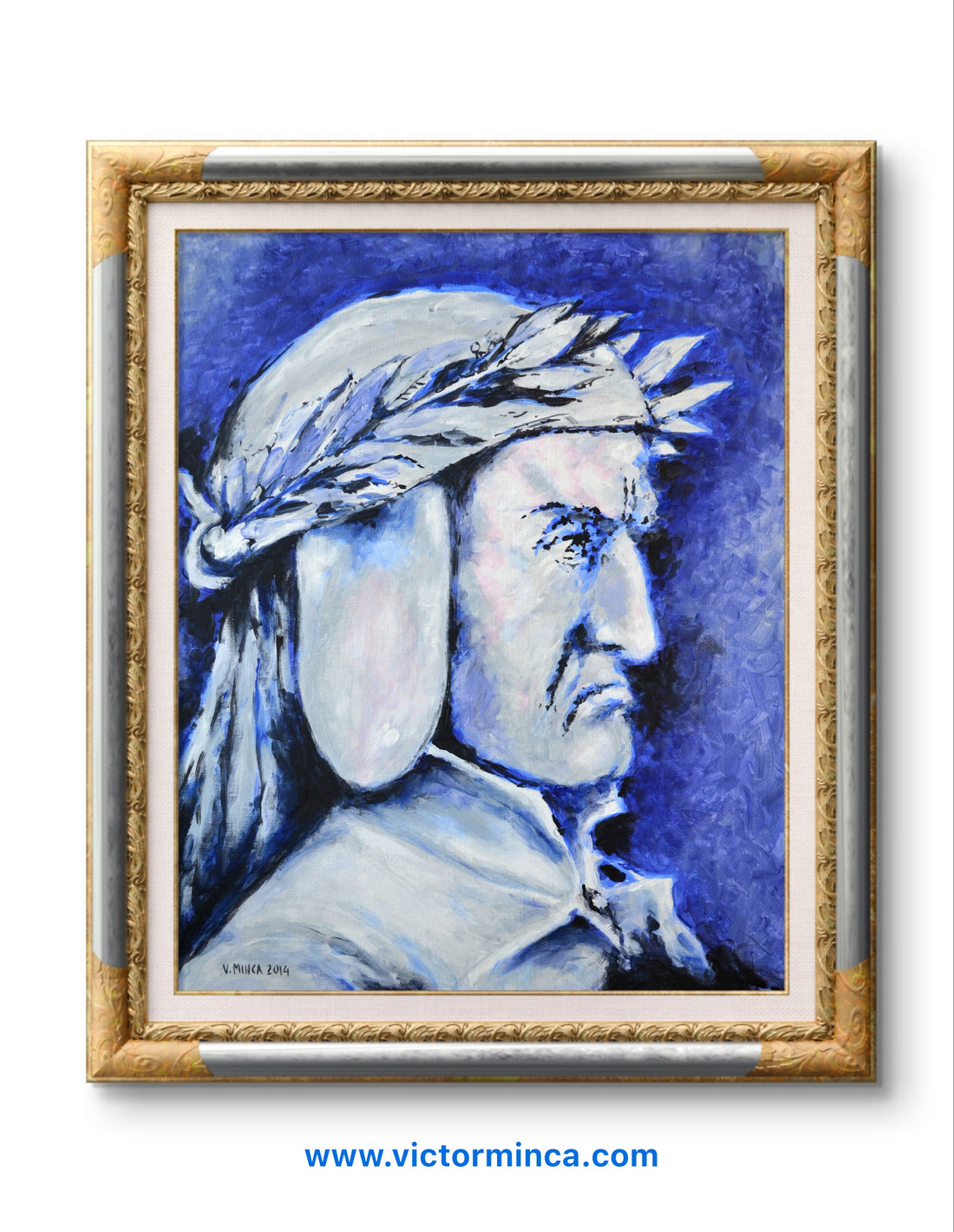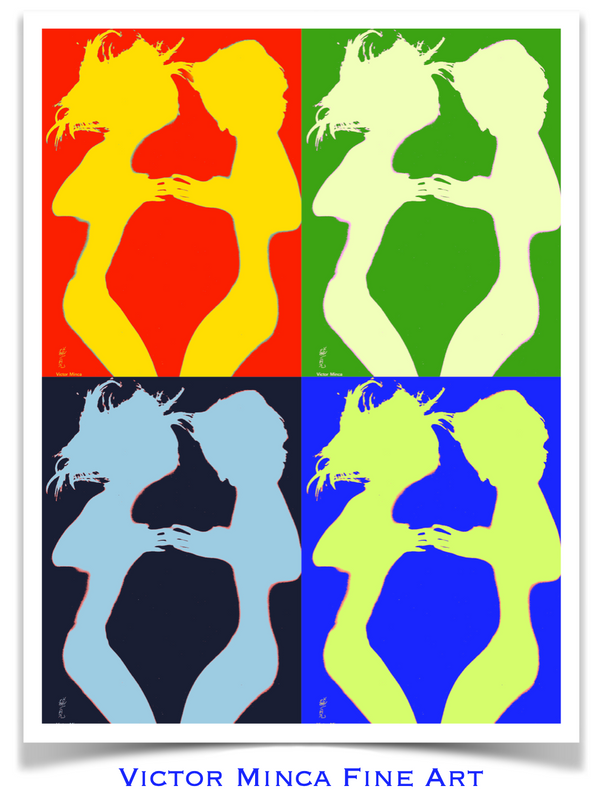Durante degli Alighieri, simply called Dante; (c. 1265–1321), was a major Italian poet of the late Middle Ages. His Divine Comedy, originally called Comedìa and later called Divina by Boccaccio, is widely considered the greatest literary work composed in the Italian language and a masterpiece of world literature. In Italy he is called il Sommo Poeta and il Poeta. He, Petrarch, and Boccaccio are also called "the three fountains" and "the three crowns". Dante is also called "the Father of the Italian language".
The uniqueness of the artwork lies in the melding of historical resonance with contemporary meaning, creating a fresh interpretation of Dante with a nod towards the resilience and spiritual depth of Indigenous identity.
Art Critique:
In "Dante," we see a striking portrait of a figure steeped in both renown and mystery. The artist has expertly employed a range of evocative elements, coupled with effective technique, that speak volumes of the subject's depth and wisdom.
The visual elements of this piece are remarkable in both their execution and their implications. Notably, the artist's use of light and shadow effectively lends depth to the portrait, emphasizing the assertive features of Dante while introducing a certain contemplative quality in his gaze. The depth of thought etched in Dante's face is well depicted, inviting viewer involvement.
The painting's intriguing palette, predominantly composed of blues, whites, and blacks, introduces a sense of serenity that serves as the perfect foil to Dante's overall intense demeanor. The slight touches of pink on Dante's face, successfully indicate an external light source, adding realism to the scene.
This artwork bears testament to your evident talent and thoughtful approach to subject portrayal. Overall, Dante is a commendable work that leaves a striking impact, with its layered narrative and evocative execution.

